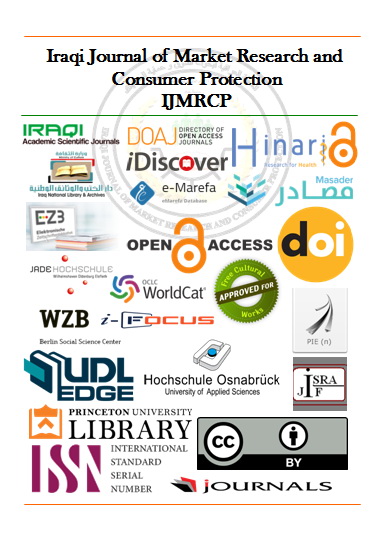EXTRACTING AND IDENTIFYING SOME ACTIVE COMPOUNDS FROM POMEGRANATE SEEDS AND BANANA PEELS AND THEIR INHIBITORY EFFECT ON SOME MICROORGANISMS
EXTRACTING AND IDENTIFYING SOME ACTIVE COMPOUNDS FROM POMEGRANATE SEEDS AND BANANA PEELS AND THEIR INHIBITORY EFFECT ON SOME MICROORGANISMS
Keywords:
Phenol, flavonoid. Microwave. Mold. BacteriaAbstract
The study aimed to extract phenolic and flavonoid compounds from pomegranate seeds and banana peels by microwave technology, where the percentages of phenolic compounds in pomegranate seeds and banana peels were 40.60 and 32.27 mg GAE/g dry weight, respectively, while the flavonoid compounds were in pomegranate seeds and banana peels 2.48 and 17.8 mg catechins/g dry weight, and they were diagnosed using a High-performance liquid chromatography(HPLC) Technique device, and it was found that there is a number of phenolic compounds included (galic acid, caffeic acid, chlorogenic and ellagic acid), while flavonoid compounds included (catechins, quercetin, coumarin, and myricetin). and the inhibitory activity of the plant extracts was tested against a number of bacteria Escherichia coli (E.coli), Bacillus cereus(B.cereus), Staphylococcus aureus(S.aureus and Pseudomonas aeruginosa (P.aeruginosa), at three concentrations 3, 7and 10% which reached the highest inhibitory effectiveness of pomegranate seed extract and according to the order of its effect on bacteria as follows P.aeruginosa, E. coli, and finally B. cereus, as the diameter of the inhibition halo at a concentration of 10% reached 21 mm against P.aeruginosa bacteria, and pomegranate seed extract didn't show any inhibitory activity against S.aureus bacteria. Banana peel extract showed lower inhibitory efficacy than pomegranate seed extract, as the diameter of the inhibition halo against P.aeruginosa bacteria at a concentration of 10% to 11 mm, while the extract didn't show any inhibitory activity against B. cereus bacteria at any concentration. Pomegranate seed extract exceeded the highest concentration of phenolic substances in addition to containing a higher concentration of phenolic compounds and flavonoids diagnosed and had the highest inhibitory effectiveness against bacteria and molds.
Published
Issue
Section
License
Copyright (c) 2025 Iraqi Journal of Market Research and Consumer Protection

This work is licensed under a Creative Commons Attribution 4.0 International License.





